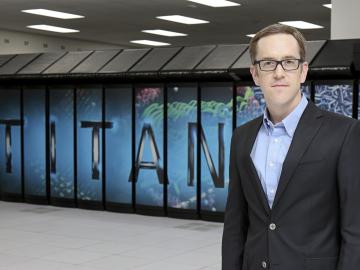
Sergei Kalinin of the Department of Energy’s Oak Ridge National Laboratory knows that seeing something is not the same as understanding it.

Sergei Kalinin of the Department of Energy’s Oak Ridge National Laboratory knows that seeing something is not the same as understanding it.

OAK RIDGE, Tenn., May 2, 2018—The search for a more energy efficient and environmentally friendly method of ammonia production for fertilizer has led to the discovery of a new type of catalytic reaction.



Researchers have long sought electrically conductive materials for economical energy-storage devices. Two-dimensional (2D) ceramics called MXenes are contenders.



Barely wider than a strand of human DNA, magnetic nanoparticles—such as those made from iron and platinum atoms—are promising materials for next-generation recording and storage devices like hard drives.

The US Department of Energy announced today that it will invest $16 million over the next four years to accelerate the design of new materials through use of supercomputers.


